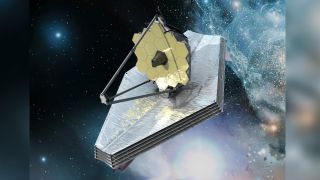NASA's James Webb Space Telescope on track for Dec. 22 launch
An incident during processing earlier this month didn't cause any serious problems, NASA determined.

NASA's much-delayed James Webb Space Telescope remains on track to launch next month.
Further testing on the huge observatory has confirmed that Webb's liftoff, atop an Ariane 5 rocket from French Guiana, is still targeted for Dec. 22, NASA officials wrote in a blog post last week.
The $9.8 billion Webb has experienced years of technical delays, funding issues and a pandemic. And it suffered another delay, albeit a slight one, earlier this month during its final preparations for launch.
Related: NASA needs a new telescope, ASAP, to find Earth's twin
On Nov. 22, NASA reported that a clamp band that holds Webb to its launch vehicle adapter had released unexpectedly recently, causing vibrations throughout the telescope. The incident required further investigation, pushing back the observatory's launch date from its target (at the time) of Dec. 18.
Last week's blog post reports that technicians have performed more testing following the incident, clearing the way for Webb to launch on Dec. 22.
"Engineering teams completed ... tests, and a NASA-led anomaly review board concluded no observatory components were damaged in the incident," the agency wrote in the Nov. 24 blog post.
Sign up for the Live Science daily newsletter now
Get the world’s most fascinating discoveries delivered straight to your inbox.
NASA and its Webb partners next ran a "consent to fuel" review, which was approved, to begin tanking up the Arianespace Ariane 5 rocket. With that milestone passed, fueling began on Nov. 25 and is expected to last 10 days.
Webb's journey will only just begin after reaching space. It will take Webb a month to get to its destination, a stable gravitational location in space known as a Lagrange point. Once it gets to that spot, which lies about 930,000 miles (1.5 million kilometers) from Earth, Webb will spend six months in a commissioning period to ensure its complex mirror unfolds and that all instruments are ready for observations.
It's unclear where Webb will turn its attention first, but the telescope's "early release science programs" include a range of programs in planets, the solar system, galaxies, black holes, stellar physics and star populations.
Follow Elizabeth Howell on Twitter @howellspace. Follow us on Twitter @Spacedotcom and on Facebook.


